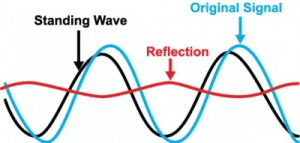No one wants to pay Non-Recurring Engineering (NRE) to have a widget designed and developed. Let’s get that out of the way immediately. And who can blame you? With the global economy, and through the wonders of Internet marketplace giants such as Amazon and Alibaba, one can find a widget to do practically everything. But certain industries value performance over price, such as the aerospace and defense electronics market. In these industries you can’t just assume that your widget is a split-second Google search away (not that you shouldn’t try first). And for good reason after all, since high-performance RF electronics systems rarely reach the volumes required to justify the cash outlay needed for development.
So when is it really worth paying NRE for an RF electronics design? If you find that your needs are fairly specialized – one might even say niche-y – then you obviously should not expect vendors to jump at the opportunity to develop your widget at no up-front cost. There obviously has to be a reasonable financial return for the supplier to invest their R&D funds, both from the perspective of total return as well as the length of time for the return given the time value of money.
Most prospective clients for design services understand this, yet some have a difficult time applying objectivity in their thinking about the nature of their desired widget and whether it’s reasonable to expect an engineering design services business to invest any of its R&D to help fund their development. Ask yourself:
- Am I willing to forfeit or share the Intellectual Property ownership rights of the design? If not, there is almost no chance of buy-in from a prospective bidder because they will not have a legal avenue to design and market the solution to others.
- How detailed and in-depth are my performance specifications for this widget? If you have flexibility in several key areas, there may be room for a vendor to tailor the design to reach a broader audience, thus potentially lowering NRE.
- Are there similar widgets on the market? If not and unless you’re sitting on a gold mine of an idea, it’s unlikely an engineering design house would invest any of its own capital to produce a solution.
Another aspect to this topic is that each design shop will have its own risk tolerance level, which will be translated into how they approach NRE with you. Consider three companies, Company A, Company B, and Company C. Company A may be willing to trade NRE for market potential. Company B may be willing to amortize NRE across some number of recurring units. Company C may be unwilling to absorb any of the development risks, and therefore require NRE be paid-in-full. Does this automatically mean that Company A is superior to Company B, which is superior to Company C? Not necessarily.
Company A fits the profile of an aggressive company willing to take chances to win business, hoping to make up for it on the back-end. Many start-up companies with limited resources fit this mold. Company B fits the profile of a company that is careful about risk but has some willingness to invest. Meanwhile, Company C fits the profile of a company that may be larger and/or risk-averse.
There are potential pitfalls with any of the three example companies, none the least of which are schedule and default risk (Company A), and up-front cash outlay (Companies B and C). In the end, you must decide what you’re willing to trade-off and what risks you can mitigate.
NuWaves Engineering’s RF design services business regularly evaluates customer requirements and presents tailored solutions with various NRE approaches for its clients based on many of the aforementioned criteria. For more information, contact us.


